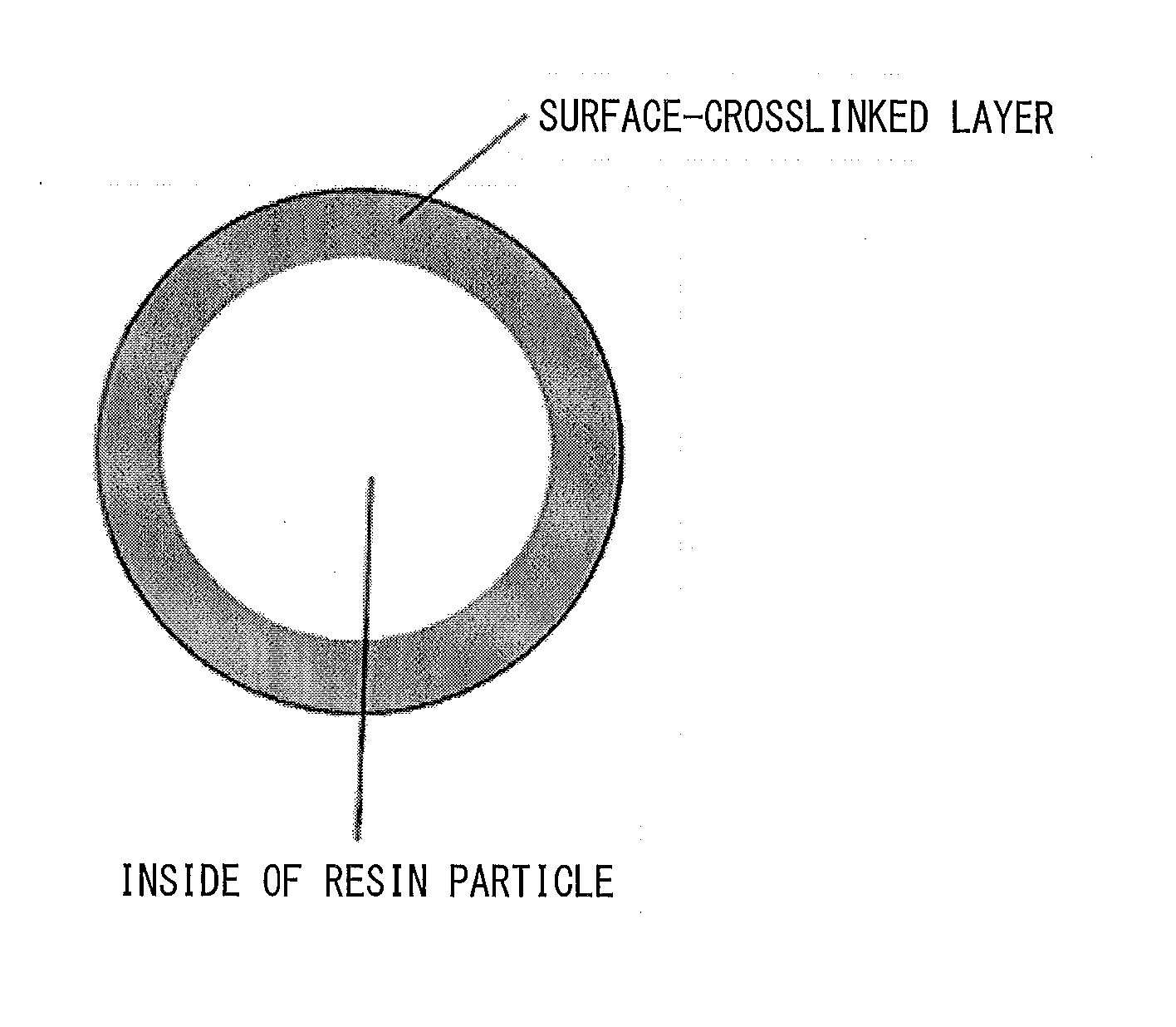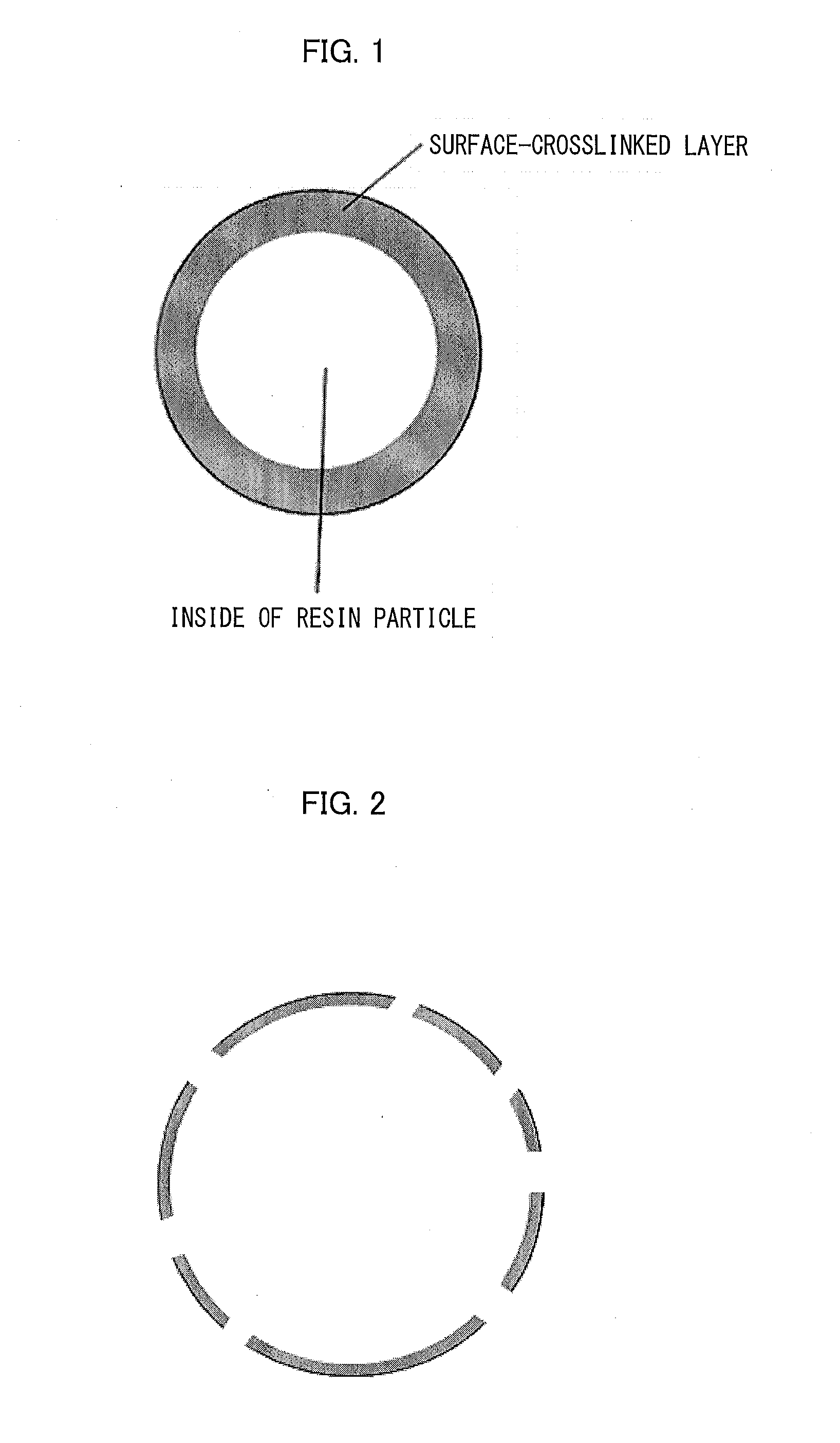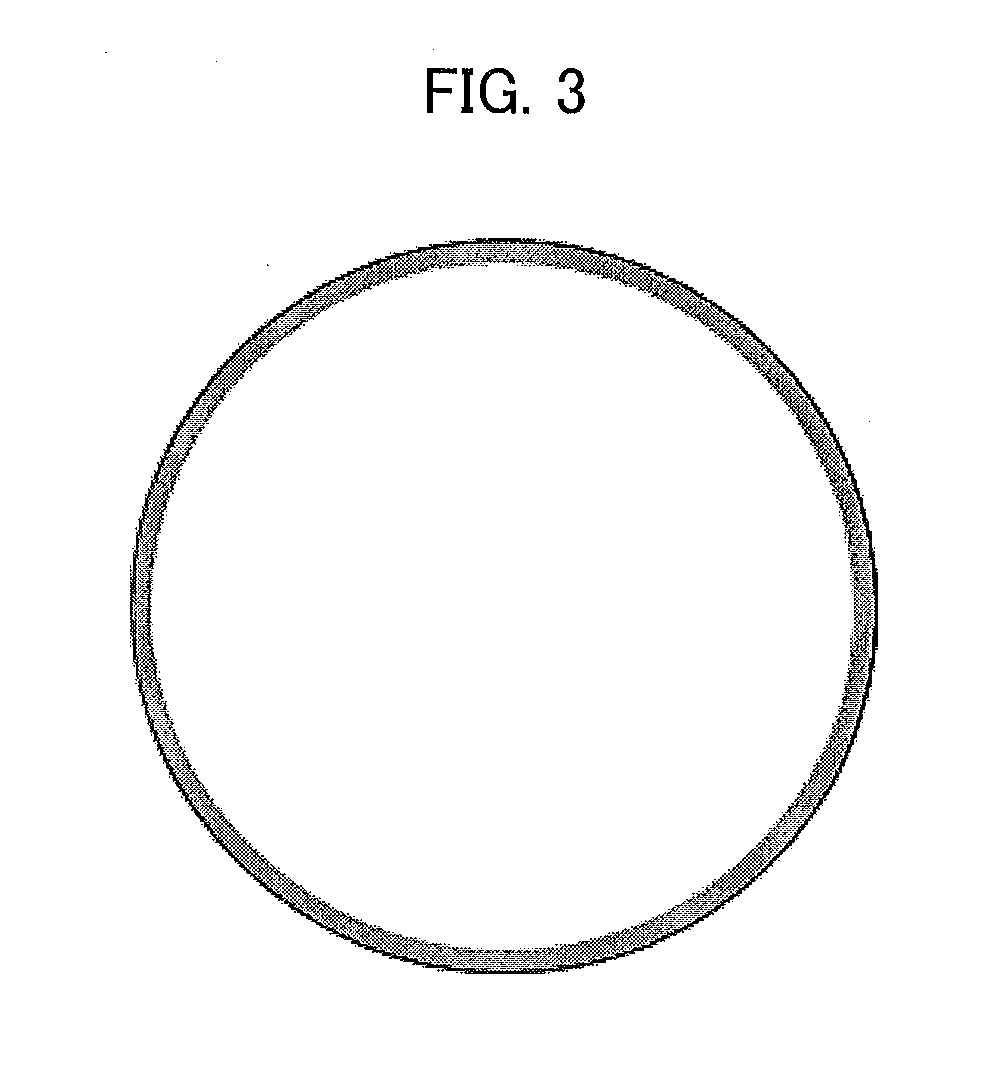Method for producing polyacrylic acid (SALT)-based water absorbing agent, and water absorbing agent
a technology of polyacrylic acid and water absorbing agent, which is applied in the field of producing a polyacrylic acid (salt)based water absorbing agent and a water absorbing agent, can solve the problems of ineffective function, difficult design of manufacturing device, and difficulty in ensuring the safety of patients, etc., and achieves high absorption capacity, high liquid permeability, and easy design of manufacturing device
- Summary
- Abstract
- Description
- Claims
- Application Information
AI Technical Summary
Benefits of technology
Problems solved by technology
Method used
Image
Examples
reference example 1
[0375]A solution (A) was prepared by mixing 421.7 g of acrylic acid, 1.83 g of polyethyleneglycol diacrylate (weight average molecular weight: 523, the polyethyleneglycol diacrylate as an internal crosslinking agent is such that the average number (n) of moles of ethylene oxide added is 9) (0.06 mol %), and 1.29 g of a 2 mass % of diethylentriamine pentaacetate trisodium aqueous solution (manufactured by CHELEST CORPORATION). A NaOH aqueous solution (B) was prepared by diluting 352.3 g of a 48.5 mass % NaOH of aqueous solution with 402.7 g of ion exchange water.
[0376]While the solution (A) was stirred with a magnetic stirrer, the aqueous solution (B) was added to the solution (A) all at once in an open system, and was mixed. Although an educt was observed at the beginning of the mixing, the educt was immediately dissolved, thereby obtaining a monomer aqueous solution (monomer concentration: 43 mass %, neutralization rate: 73 mol %). Then, to the monomer aqueous solution, 19.4 g of a...
example 1
[0380]Relative to 100 parts by mass of the water absorbent resin (1) obtained in Reference Example 1, 4.1 parts by mass of surface treatment agent mixture solution containing 2-oxo-1,3-dioxolane, 1,2-propanediol, and ion exchange water (in a mixture ratio (mass ratio) of 0.4:0.7:3.0) was added and mixed.
[0381]In the mixing, a Loedige mixer (manufactured by Gerbrueder Ledige Maschibenbau GmbH) was used as a mixer. The water absorbent resin (1) and a surface treatment agent mixture solution were mixed together by spraying the surface treatment agent mixture solution onto the water absorbent resin (1) with the use of a spray nozzle (single-fluid hollow cone nozzle (1 / 4M-K-008) manufactured by H. IKEUCHI Co., Ltd.).
[0382]A resultant mixture was evenly spread on a SUS vat. The SUS vat was allowed to stand in a drying apparatus in which an atmospheric temperature and a dew point were conditioned to be at 197° C. and 90° C., respectively, as measured by Humidity and Temperature Transmitter...
example 2
[0386]The same operations as in Example 1 were carried out except that the atmospheric dew point during a heat treatment was changed to 70° C., so that a surface-crosslinked water absorbent resin (3) and a water absorbing agent (4) were obtained. The physical properties of the surface-crosslinked water absorbent resin (3) and the water absorbing agent (4) thus obtained are shown in Table 2.
PUM
| Property | Measurement | Unit |
|---|---|---|
| temperature | aaaaa | aaaaa |
| dew point | aaaaa | aaaaa |
| temperature | aaaaa | aaaaa |
Abstract
Description
Claims
Application Information
 Login to View More
Login to View More - R&D
- Intellectual Property
- Life Sciences
- Materials
- Tech Scout
- Unparalleled Data Quality
- Higher Quality Content
- 60% Fewer Hallucinations
Browse by: Latest US Patents, China's latest patents, Technical Efficacy Thesaurus, Application Domain, Technology Topic, Popular Technical Reports.
© 2025 PatSnap. All rights reserved.Legal|Privacy policy|Modern Slavery Act Transparency Statement|Sitemap|About US| Contact US: help@patsnap.com



